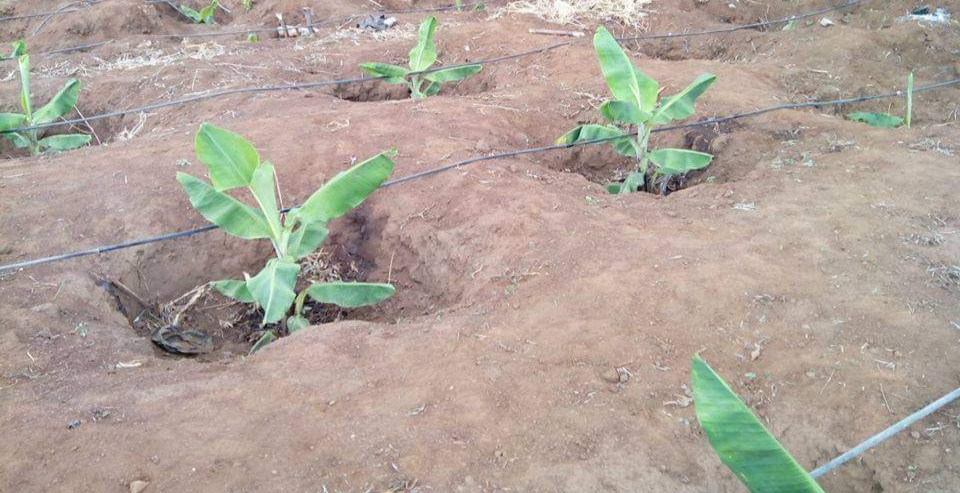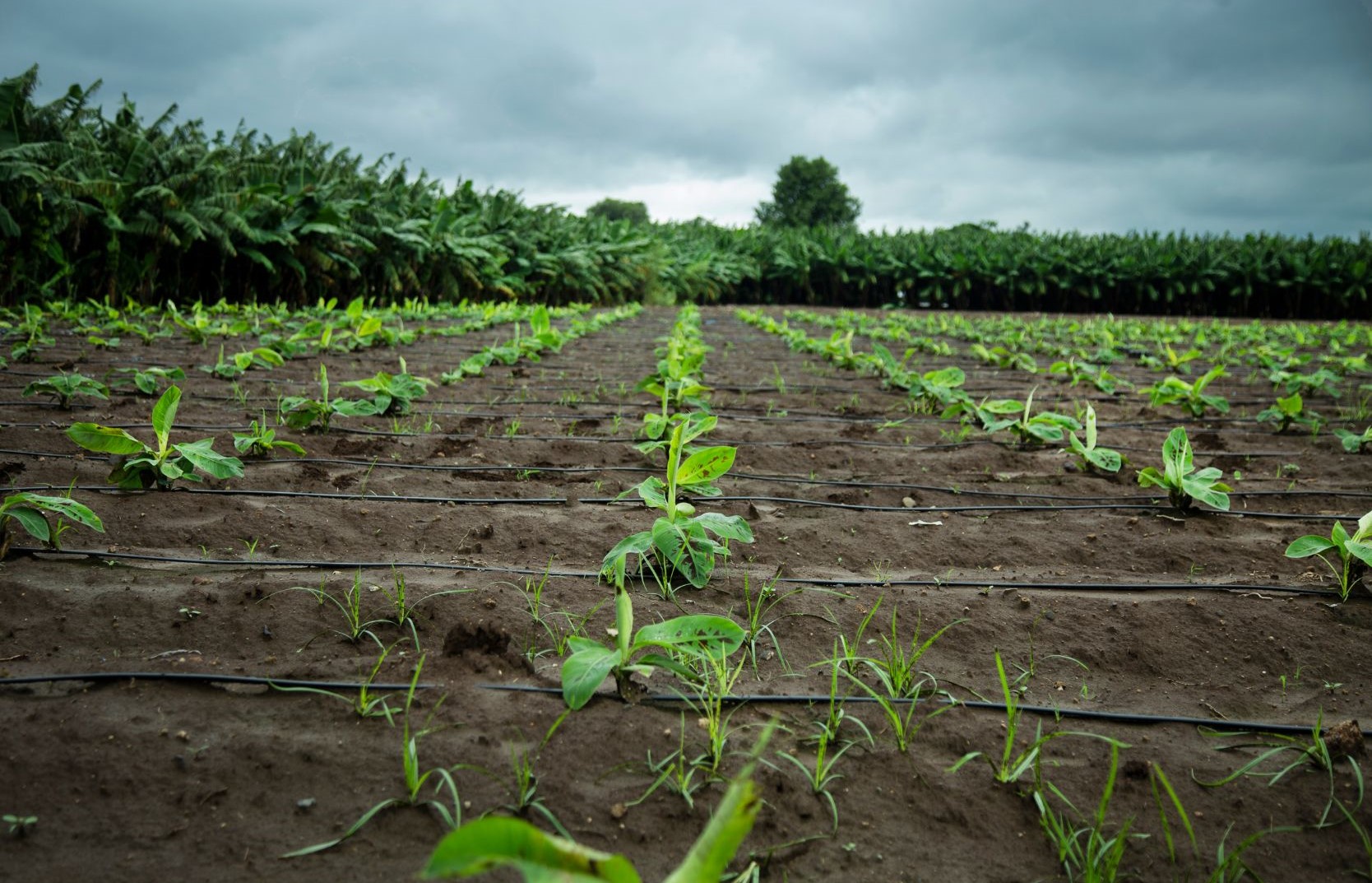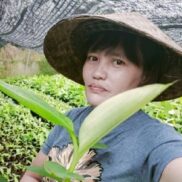Banana Planting Distances and Support Systems

This post is also available in:
This post is also available in:
![]() Español (Spanish)
Español (Spanish) ![]() Français (French)
Français (French) ![]() हिन्दी (Hindi)
हिन्दी (Hindi) ![]() العربية (Arabic)
العربية (Arabic) ![]() Türkçe (Turkish)
Türkçe (Turkish) ![]() Português (Portuguese (Brazil))
Português (Portuguese (Brazil))
Banana growers are advised to use proper spacing to have the most profit from their cultivation. The broader the area among the banana plants, the better the light and air penetration. On the other hand, too dense banana plantations can lead to the production of undersized fruit bunches, decreased growth rate and life cycle length, increased disease problems, and poor fruit quality.
Commercial Banana plantation farmers grow and follow bananas’ standard requirements for spacing for better production yield.
Spacing and planting for banana plants
The suggested planting row spacing is 2.0 meters x 2.5 meters with an average of 2,000 plants per hectare since that is the standard distance by minimizing Sigatoka infections.
To ensure that plants receive the most sunlight possible, rows in flat fields should be straight. On the contrary, to prevent soil erosion on fields with slopes, rows should be laid out in a contour pattern.
You are advised to create the planting holes a month or two before planting. Usually, they should be at least 30 cm x 30 cm x 30 cm, but preferably 45 cm x 45 cm x 45 cm to as big and deep as 60 cm x 60 cm x 60 cm. Place the topsoil on one side and the soil from the bottom of the hole on another. Make sure the hole is both deep and wide. Banana tree roots thrive when they have space to spread out. The large and deep planting holes ensure that the future plants’ roots may access the most soil possible and increase their ability to withstand strong winds.
In the Philippines, we have two systems of Banana planting patterns.
- Triangular planting: Tissue culture banana suckers are the ideal application for this method. The trees are planted using a square pattern, with the exception that the trees in the even-numbered rows are positioned in the middle of the odd-numbered rows rather than directly across from them. The perpendicular distance between any two adjacent rows equals the distance between any two adjacent trees in a row. Each tree takes up more space than in the square system; hence, fewer trees per hectare exist.
- Square planting: Square planting is the most commonly used system and is relatively simple to draw out.

System of planting Planting Distance Hills No. of plants per Hectare
Triangular planting 88 m x 3.33 m Double 2,080
20m x 3.70m Triple 2,520
Square planting 25m x 2.25m Single 1,975
With this approach, trees are planted on each square corner regardless of planting distance. Short-lived filler trees can be successfully grown in the middle space between four existing trees. This technique allows for growing in two directions and intercropping.
There are 2 commonly used planting methods in the country:
1.Pit method: In the garden land system of cultivation, pit planting is frequently used. Pits of 60 cm x 60 cm x 60 cm are dug and filled with a 1:1:1 mixture of soil, sand, and FYM (Farm Yard Manure). The pit’s center is filled with suckers, and the surrounding earth is compacted.
Nevertheless, this approach is very expensive and time-consuming. The only benefit is that no earthing up is necessary since planting is done at the necessary depth. Currently, this practice is more rare compared to the following.
2.Furrow method: When the field has been prepared, ridges between 30 and 40 cm deep are dug by hand or with a ridger machine. Suckers are positioned at the necessary intervals, and FYM are applied, mixed with the soil, and tightly packed around them. In the annual planting system, furrow planting is done. This method requires regular earthing up to cover the exposed rhizomes.
Plantain Propping: Importance and Methods in Banana plant support

Propping is a cultural practice carried out on banana plants to provide additional support for the plant when it carries heavy loads (fruits) during bunching. In addition to high winds, nematodes, and stem borers increasing the pace of loss, plants are often weaker during the dry season. These factors make it necessary for bearing banana plants to always have 1 or 2 wooden props, typically bamboo, placed against the stems on the leaning side to make a triangle. A natural fork can occasionally be formed by a lateral branch at the top of the bamboo prop, which can be used to hold the plantain without tying it to the bamboo. Moreover, this method promotes the consistent development of fruit bunches and is absolutely necessary for tall banana varieties.
Cable guying is a form of propping that entails setting up wooden poles at the field’s perimeter, using steel wires to tie each bunch to the poles in the raw, and tying the rope to a banana tree. Another strategy is to place a windbreak in the direction where the wind often blows.
Two types of Guying exist: Overhead and Ground.
- Overhead guying by attaching the neck of the bunch’s string to the overhead cable.
- Ground guying by tying twine around the bunch’s neck and attaching it to the nearby plant.
Further reading
Banana: Crop History, Nutritional Value and Health Benefits
Banana Plant Information & Environmental Requirements
Banana Plant Care – Commercial Cultivation of Bananas
Soil Requirements and Land Preparation for Bananas
Banana Planting Distances and Support Systems
Banana Water Requirements & Irrigation Systems
Banana Nutrient Requirements and Fertilization Program
Banana Plant Protection – Major Banana Diseases
Banana Plant Protection – Common Pests of Banana Plants









































































